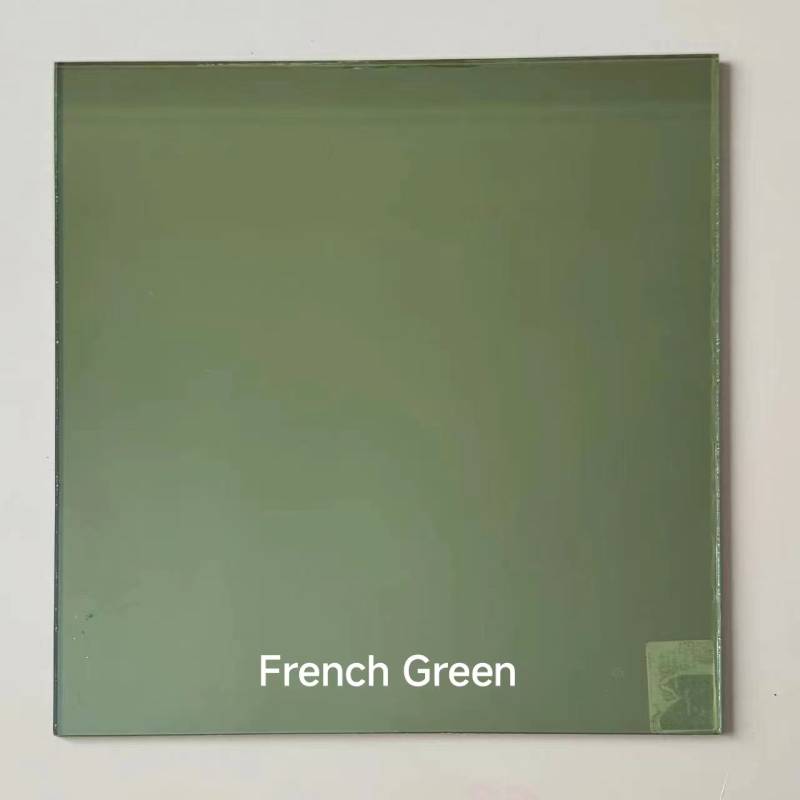

The Versatility of Green Tempered Glass in Modern Architecture
Green tempered glass has emerged as a remarkable material in the field of architecture and design, combining aesthetic appeal with exceptional structural integrity. As more architects and designers seek sustainable and innovative solutions for contemporary buildings, the use of green tempered glass provides both environmental benefits and a striking visual element.
What is Green Tempered Glass?
Green tempered glass is a type of glass that undergoes a controlled thermal treatment process, making it much stronger than standard glass. The green aspect refers to its color, which is often due to the iron content within the glass. This hue can vary from a light sea green to a deeper emerald shade, making it visually appealing in a variety of applications. The tempering process involves heating the glass to a high temperature and then rapidly cooling it, which enhances its strength and makes it more resistant to thermal shock.
Aesthetic Advantages
One of the most compelling reasons for the use of green tempered glass in architecture is its aesthetic appeal. The beautiful green tint adds a layer of elegance and sophistication to buildings, allowing for creative design opportunities. It can be used in facades, windows, and even glass walls to create a seamless connection between indoor and outdoor spaces. The way light interacts with this glass throughout the day adds depth and variety to the appearance of a structure, creating a dynamic visual experience.
Energy Efficiency and Sustainability
In addition to its beauty, green tempered glass plays a significant role in enhancing the energy efficiency of buildings. This type of glass can be produced to include low-emissivity (Low-E) coatings that reflect infrared light while allowing natural sunlight to enter. This means that buildings can maintain comfortable interior temperatures without excessive reliance on artificial heating or cooling systems, leading to lower energy consumption and reduced greenhouse gas emissions.
Green tempered glass also contributes to sustainable building practices. It is fully recyclable, which helps reduce waste and promotes a circular economy. Additionally, many manufacturers are increasingly sourcing raw materials from responsible suppliers, further aligning their practices with environmental sustainability goals.

Applications in Modern Design
The applications of green tempered glass are vast, spanning various sectors within modern architecture. In commercial buildings, large glass walls and facades made from this material can create an inviting atmosphere, facilitating natural light while providing a modern edge. In residential architecture, green tempered glass can be used in large windows and sliding doors that open up living spaces to panoramic views and natural surroundings.
Moreover, green tempered glass is an ideal choice for shower enclosures, glass railings, and balustrades, where safety, strength, and aesthetics are paramount. The transparency of glass allows for seamless transitions between spaces while maintaining safety for occupants.
Safety and Durability
Another significant advantage of green tempered glass is its safety features. When shattered, it breaks into small, blunt pieces rather than dangerous shards, significantly reducing the risk of injury. This characteristic makes it a preferred choice for high-rise buildings, public spaces, and any installations where safety is a concern.
Furthermore, green tempered glass is resistant to scratches and weathering, which means it can maintain its appearance and integrity over time, requiring less maintenance compared to other materials.
Conclusion
The adoption of green tempered glass in architecture showcases a trend towards sustainable, aesthetically pleasing, and durable building materials. As sustainability becomes increasingly central to construction and design, the use of green tempered glass presents an ideal solution that meets both functional and ecological needs. Its beautiful hues, combined with energy efficiency and safety features, make it a versatile choice for architects and builders. In an era where design meets responsibility, green tempered glass stands out as a beacon of innovation in the architectural landscape.